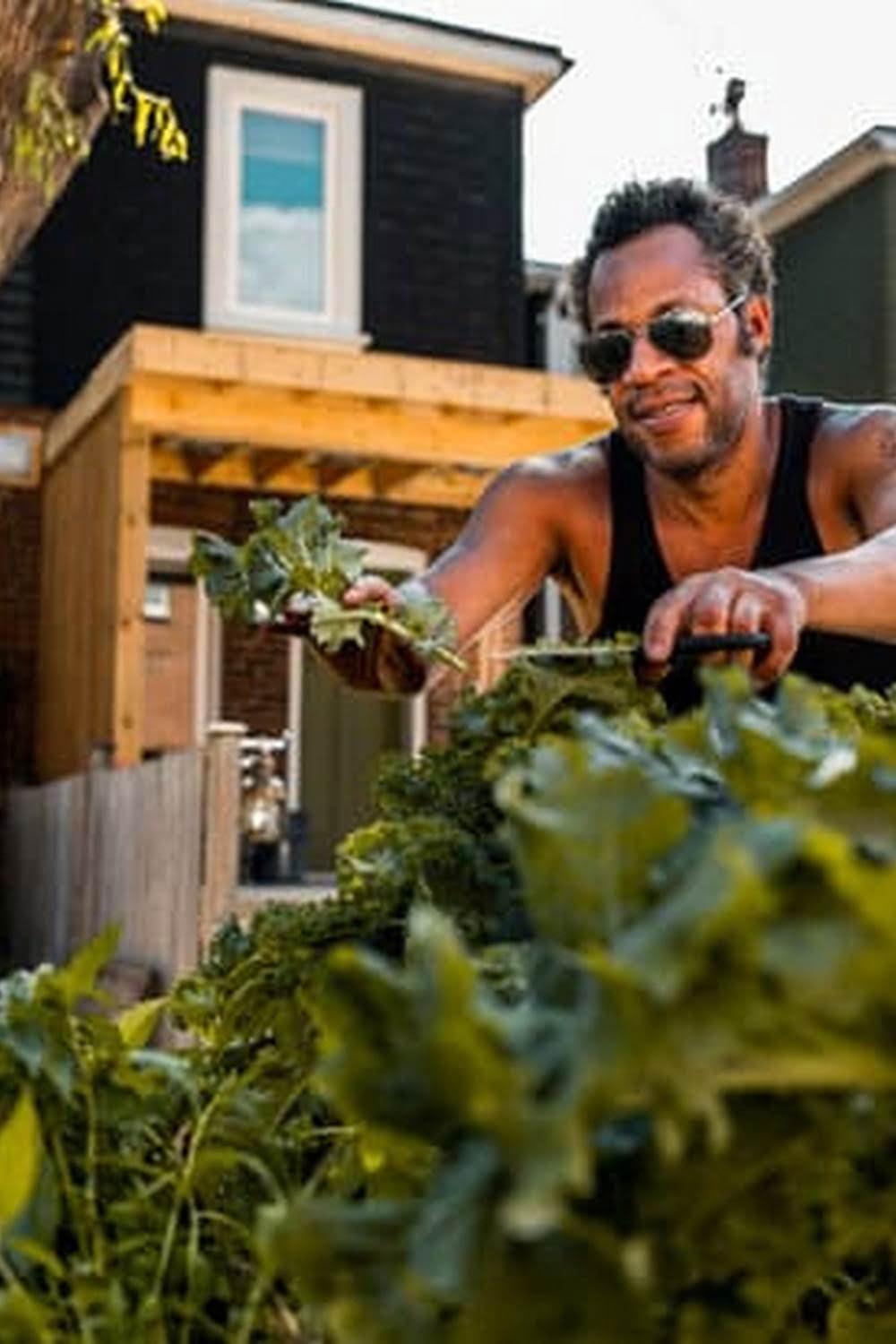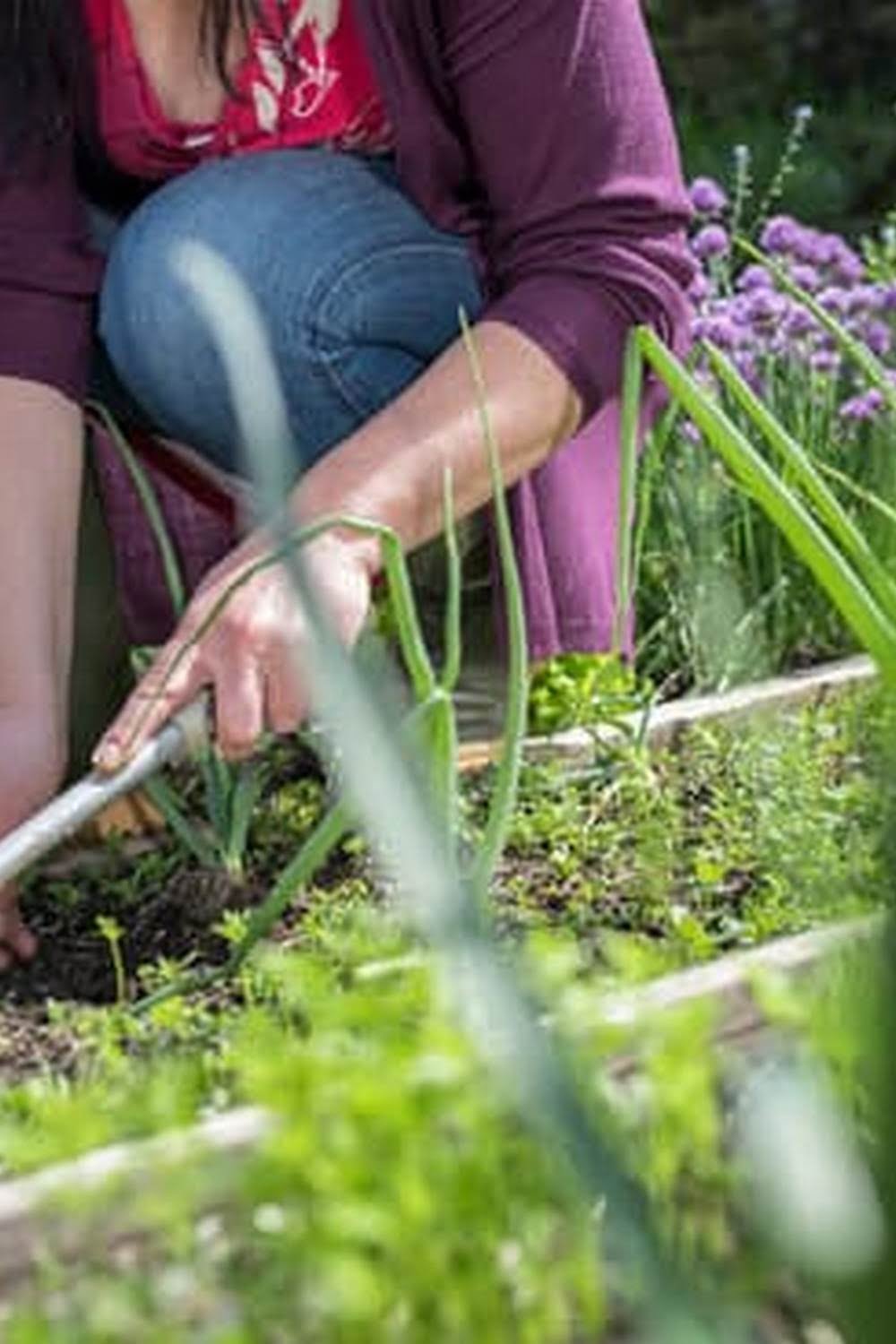Are you interested in starting your own vegetable garden in Australia? If so, raised vegetable gardens may be the perfect option for you. Raised vegetable gardens are growing in popularity across Australia, and for good reason. In this article, we will explore everything you need to know about raised vegetable gardens in Australia, from their benefits to choosing the right location, selecting the best vegetables, building and maintaining your garden, and even real-life success stories of Australian gardeners.
Raised vegetable gardens offer a range of benefits for Australian gardeners. From improved drainage and soil quality to easier access and pest control, there are many reasons why raised beds are a popular choice for growing vegetables in Australia. In this section, we will explore these benefits in more detail and discuss why raised vegetable gardens are a great option for both novice and experienced gardeners.
When it comes to starting your own raised vegetable garden, choosing the right location is crucial for success. In the following sections, we will delve into important considerations when selecting a location for your raised beds, including sunlight exposure, soil quality, and water access.
Additionally, we will provide tips on selecting the best vegetables suited for raised bed gardening in the Australian climate. Whether you have limited space or simply want to maximize your gardening efforts, raised vegetable gardens can be a game-changer for sustainable living Down Under.
Benefits of Raised Vegetable Gardens
Raised vegetable gardens in Australia offer numerous benefits to both experienced and novice gardeners. One of the primary advantages is the ability to have more control over the quality of the soil, which is crucial for growing healthy and thriving vegetables. Because raised vegetable gardens are filled with a specific type of soil, it can be tailored to suit the needs of the plants being grown.
Another benefit of raised vegetable gardens is that they provide better drainage compared to traditional in-ground gardens. This is especially important in Australia, where heavy rainfall in certain regions can lead to waterlogging and poor aeration in the soil. With raised beds, excess water can easily drain away, preventing root rot and other issues caused by water saturation.
Furthermore, raised vegetable gardens can extend the growing season for vegetables in Australia. The soil in these raised beds warms up quicker in spring than the ground soil, allowing for earlier planting and establishment of crops. Additionally, elevated beds can protect plants from late frosts or flooding during heavy rains, providing a longer window for successful cultivation.
Finally, raised vegetable gardens also offer ergonomic benefits as they require less bending and stooping compared to traditional ground-level gardening. This makes gardening more accessible and enjoyable for people with physical limitations or who simply want to avoid strain on their back and knees.
| Benefits | Examples |
|---|---|
| Control over soil quality | Customized nutrient-rich soil mix |
| Better drainage | Prevents waterlogging and root rot |
| Extended growing season | Earlier planting and protection from late frosts |
| Ergonomic benefits | Less bending and stooping |
Choosing the Right Location for Your Raised Vegetable Garden
When it comes to setting up your raised vegetable garden in Australia, one of the most important factors to consider is choosing the right location for it. The success of your garden will greatly depend on where you decide to place it.
In general, raised vegetable gardens thrive in locations that receive plenty of sunlight, at least 6-8 hours a day. This is especially crucial for vegetables such as tomatoes, peppers, and squash which require ample sunlight to grow and bear fruit.
Another key factor to consider when choosing the location for your raised vegetable garden is access to water. Make sure that the spot you choose has easy access to a water source such as a faucet or hose. Proper watering is essential for the health and productivity of your vegetables, so selecting a location that allows for convenient and efficient watering is crucial.
In addition to sunlight and water access, it’s also important to consider factors such as soil quality and drainage. Look for a location that has well-draining soil and avoid low-lying areas that may become waterlogged during heavy rains. You may also want to consider any potential pest or animal threats in the area, and take measures to protect your garden from these potential hazards.
Ultimately, when choosing the right location for your raised vegetable garden in Australia, remember that each type of vegetable has its own specific needs when it comes to light, water, and soil conditions. Take these into account when determining the best spot for your garden to ensure that your vegetables have the best chance of thriving.
Selecting the Best Vegetables for Your Raised Garden
When it comes to selecting the best vegetables for your raised garden in Australia, there are a few key factors to consider. First and foremost, it’s important to choose vegetables that thrive in the climate and soil conditions specific to your region. In Australia, common vegetables that do well in raised gardens include tomatoes, capsicum, lettuce, spinach, carrots, and zucchinis.
Another important consideration when selecting vegetables for your raised garden is the space available. Some vegetables, such as pumpkins and watermelons, require a large amount of space to spread out and may not be suitable for a smaller raised garden bed. On the other hand, compact plants like herbs, radishes, and onions are ideal for smaller raised gardens.
It’s also a good idea to consider the yield and growth habits of different vegetables when planning your raised garden. For example, if you have limited space but want a high yield, you might choose to plant climbing varieties of beans or peas that can grow vertically instead of taking up valuable ground space.
Lastly, it’s important to select vegetables that you and your family enjoy eating. There’s nothing more satisfying than harvesting fresh produce from your raised vegetable garden and incorporating it into delicious meals.
| Vegetable | Suitable for Raised Garden |
|---|---|
| Tomatoes | Yes |
| Capsicum | Yes |
| Lettuce | Yes |
| Pumpkins | No (requires too much space) |
Building Your Raised Vegetable Garden
When it comes to building your raised vegetable garden in Australia, there are a few key considerations to keep in mind. From choosing the right materials to constructing the garden itself, this section will provide you with all the information you need to get started.
Materials
There are a variety of materials that can be used to build a raised vegetable garden, including wood, bricks, and concrete blocks. When selecting the material for your garden, it’s important to consider factors such as durability, cost, and aesthetic appeal. Many Australian gardeners opt for treated pine or hardwood for their raised beds due to its longevity and resistance to decay.
Construction
Once you have selected the materials for your raised vegetable garden, it’s time to start construction. The first step is to prepare the site by clearing away any grass or debris.
Next, you’ll need to measure and mark out the dimensions of your garden bed before assembling the materials. Whether you choose to build a simple rectangular bed or get creative with different shapes and levels, ensuring that your construction is sturdy and level is crucial for the success of your raised vegetable garden.
Soil & Planting
In terms of soil, Australian raised vegetable gardens benefit from using a mix of high-quality organic soil and compost. This provides essential nutrients for healthy plant growth while also improving drainage and water retention.
Once your garden bed is constructed and filled with soil, it’s time to start planting. Whether you choose to grow tomatoes, lettuce, carrots or any other vegetables native to Australia – configuring rows and spacing according to each plant’s specific needs is vital for optimal growth.
With these guidelines in mind – selecting suitable materials and efficient construction techniques – aspiring Australian horticulturists are ready put into practice best practices when elevating their gardening experience whether growing one single quality produce item or small crops with an impressive yield output.
Maintaining Your Raised Vegetable Garden
Watering Your Raised Vegetable Garden
Proper watering is essential for the success of your raised vegetable garden. In Australia, where the climate can be hot and dry, it’s important to establish a consistent watering routine. A soaker hose or drip irrigation system can be very effective in ensuring that your plants receive adequate moisture without wasting water through evaporation. It’s best to water your raised vegetable garden in the early morning or late afternoon to minimize water loss due to evaporation.
Fertilizing Your Raised Vegetable Garden
Fertilizing is crucial for providing your vegetables with the nutrients they need to thrive. Organic compost and well-balanced organic fertilizers are ideal for raised vegetable gardens in Australia. Regularly adding compost and organic fertilizer will maintain the fertility of the soil and promote healthy plant growth. Be sure to follow the recommended application rates for any fertilizers used in your raised vegetable garden, as over-fertilization can harm your plants.
Pest Control in Your Raised Vegetable Garden
Pests can pose a significant threat to the productivity of your raised vegetable garden. In Australia, common pests include aphids, caterpillars, and snails. To control these pests without using harmful chemicals, consider introducing beneficial insects such as ladybugs or using natural pest control methods like hand-picking pests or using neem oil spray. By staying vigilant and addressing pest issues promptly, you can protect your raised vegetable garden from potential damage.
By maintaining a proper watering schedule, providing adequate fertilization, and implementing effective pest control measures, you can ensure that your raised vegetable garden in Australia thrives and yields a bountiful harvest.
Harvesting and Enjoying the Fruits of Your Labor
After putting in the hard work of building and maintaining your raised vegetable garden in Australia, it’s time to reap the rewards of your labor. Here are some tips for harvesting and enjoying the fruits (and vegetables.) of your labor with your raised vegetable garden.
- Harvest at the Right Time: Each vegetable has its own optimal time for harvesting. Research or consult gardening guides to know when each type of vegetable is ready to harvest.
- Proper Harvesting Techniques: Use a sharp knife or shears to harvest fruits and vegetables without damaging the plant. Be gentle while handling delicate produce to prevent bruising.
- Enjoy Fresh Produce: There’s nothing quite like enjoying fresh fruits and vegetables straight from your garden. The taste and texture of homegrown produce are often superior to store-bought options.
Not only can you enjoy the delicious taste of your homegrown vegetables, but harvesting them from your raised garden also provides a sense of accomplishment and pride. Additionally, you can save money on grocery bills by growing your own produce.
Whether you choose to consume the vegetables right away or preserve them for later use, having a bountiful harvest from your raised vegetable garden is a gratifying experience that will keep you motivated to continue gardening.
Remember that successful harvesting doesn’t just mean gathering ripe produce – it also entails proper storage and utilization of excess yields. Consider sharing surplus vegetables with family, friends, or neighbors, as this can be a great way to spread awareness about the benefits of follow noopener”>raised vegetable gardens in Australia.
Success Stories
There are countless success stories of individuals and communities across Australia who have transformed their gardening experience by implementing raised vegetable gardens. These inspiring real-life examples showcase the numerous benefits and possibilities that come with embracing this method of gardening. Whether it’s in urban areas, suburban neighborhoods, or rural settings, raised vegetable gardens have proven to be a game-changer for many enthusiastic gardeners.
Here are some remarkable success stories that demonstrate the impact of raised vegetable gardens in Australia:
- The Smith Family Community Garden in Melbourne: This community garden initiative has brought together residents from all walks of life to cultivate their own raised vegetable gardens. By providing access to limited space and teaching sustainable gardening practices, the community has been able to grow an abundance of fresh produce while fostering a sense of belonging and unity.
- The Green Thumb Initiative in Sydney: A group of environmentally-conscious individuals came together to create a network of raised vegetable gardens in various public spaces throughout the city. From local parks to school grounds, these gardens not only beautify the surroundings but also provide opportunities for education and community engagement around sustainable food production.
- The Outback Oasis Farm in Queensland: In an arid region where traditional agriculture faces challenges, this farm has implemented large-scale raised vegetable gardens using innovative irrigation methods. As a result, they have been able to consistently grow a variety of vegetables despite the harsh conditions, demonstrating the potential for raised gardens to thrive in diverse environments across Australia.
These success stories serve as testaments to the adaptability and effectiveness of raised vegetable gardens in Australia. They showcase how this method is not only beneficial for individual gardeners but also has the potential to contribute to larger agricultural initiatives and community development efforts. Raised vegetable gardens have truly become a catalyst for positive transformation within Australian agriculture.
Conclusion
In conclusion, raised vegetable gardens have become increasingly popular in Australia for good reason. The benefits of these gardens, such as improved drainage, better soil quality, and reduced strain on the gardener’s back, make them an attractive option for both experienced gardeners and beginners. From choosing the right location to selecting the best vegetables and building the garden, there are many factors to consider when starting a raised vegetable garden in Australia.
The success stories of real-life examples of raised vegetable gardens in Australia showcase how these gardens have transformed Australian agriculture. With proper maintenance including watering, fertilizing, and pest control, these gardens can yield a bountiful harvest for families and communities. This shift towards sustainable and efficient gardening practices has had a positive impact on local food production and access to fresh produce.
Overall, raised vegetable gardens offer immense potential for transforming the way Australians approach food cultivation. As more individuals and communities embrace this method of gardening, there is hope for healthier lifestyles, stronger connections to nature, and a more sustainable agricultural future for Australia. Whether it’s in urban areas or rural settings, the rise of raised vegetable gardens in Australia is undoubtedly contributing to positive changes in agriculture and food security.
Frequently Asked Questions
What Is the Best Layout for a Vegetable Garden in Australia?
The best layout for a vegetable garden in Australia will depend on factors such as local climate, sun exposure, and available space. Generally, it’s advisable to place taller plants at the back, with shorter ones in front to maximize sunlight.
What Do I Put on the Bottom of a Raised Garden Bed Australia?
When it comes to the bottom of a raised garden bed in Australia, many gardeners recommend layering materials like cardboard or newspaper to prevent weeds from growing up into the bed. It also helps with drainage and can act as a barrier against pests.
How High Should a Raised Garden Bed Be Australia?
The ideal height for a raised garden bed in Australia is typically around 12-18 inches. This allows for good root development and soil depth while also making it easier to reach across the bed for planting, weeding, and harvesting.

If you’re looking to get into vegetable gardening, or are just looking for some tips on how to make your current garden better, then you’ve come to the right place! My name is Ethel and I have been gardening for years. In this blog, I’m going to share with you some of my best tips on how to create a successful vegetable garden.





